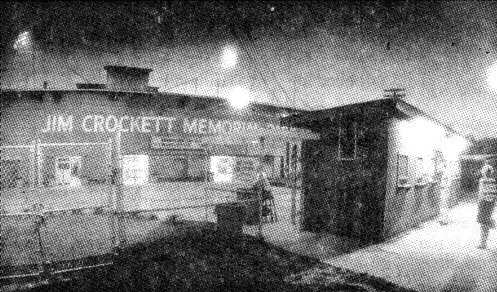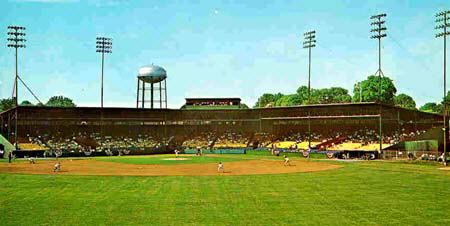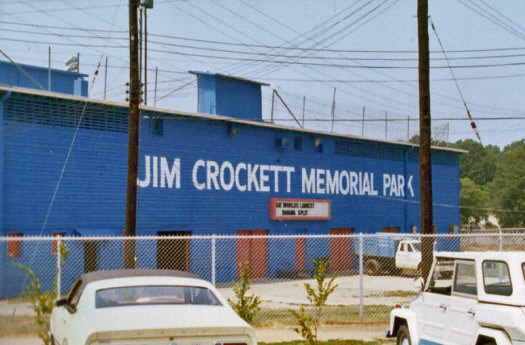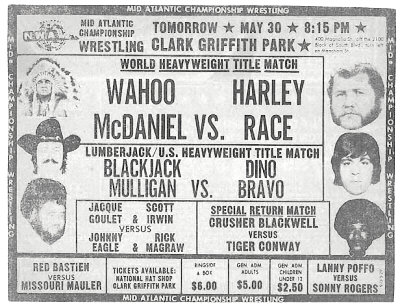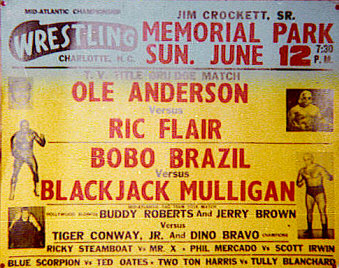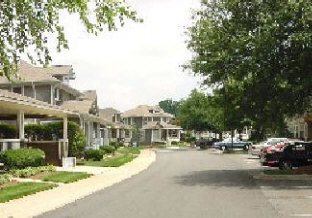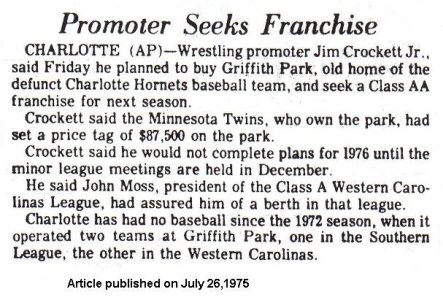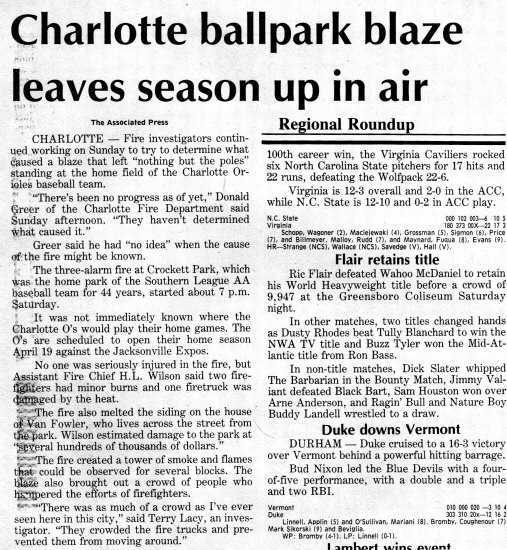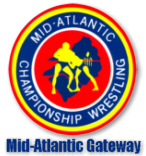 |
|
|
|
Link to mainstream media reference to Jim Crockett, Sr. and Crockett Park
New photo from DigitalBallparks.com (Scroll below) New clippings document the Crockett family bringing baseball back to Charlotte.
RETURN TO THE MID-ATLANTIC GATEWAY
|
||
|
CROCKETT PARK Jim Crockett Memorial Park (originally Clark Griffith Park) Charlotte NC |
||
|
"There were very few stadiums in the world that could compare with the very colorful and beautiful wooden ballpark that went by two different names… Clark Griffith Park and from 1971 onward, Jim Crockett Park. The beautiful wooden grandstand interwoven with steel beams was a marvel when it was completed and as memorable as it was… would also become its downfall. The history books are filled with sad stories of these grand wooden ballparks meeting their hellfire endings at the hands of a tossed match, a flicked cigarette or even by some very rotten children. This ballpark's finality would come via the latter." - Digital Ballparks http://www.digitalballparks.com/Southern/Crockett1.html
Originally called Clark Griffith Park, the ballpark was renamed Jim Crockett Memorial Park a year after the Crockett family purchased the minor league Orioles baseball franchise and brought the team from Asheville NC to Charlotte for the 1976 season. The team was the AA farm affiliate of the Baltimore Orioles, and played in Charlotte until 1988. The O's won a couple of Southern League titles including in a 1980 championship for a team led by Cal Ripken, Jr. Charlotte had been without baseball since 1972. Frances Crockett oversaw baseball operations for the Crockett family business and was the president of the Charlotte Orioles, and at one time was the commissioner of the Southern League.
The ballpark was built in 1940 and when the Orioles began play there, it held over 5,000 fans. Mid-Atlantic Wrestling cards were held there occasionally. It was destroyed by fire on March 16, 1985. The ballpark was renamed from Clark Griffith Park to Jim Crockett Memorial Park in June of 1977. The clippings below for two outstanding Mid-Atlantic Wrestling events on 5/30/77 and 6/12/77 reflect the name change.
See dozens of photos and baseball history at DigitalBallparks.com http://www.digitalballparks.com/Southern/Crockett1.html
"I love the Crockett Park photos. I grew up out there with the Crockett kids doing odd jobs starting at 9 years old. Barry Windham worked there for a summer also. Dan Spivey and Scott Hall were there a little while working on the ground crew while they were breaking in the biz. The infamous Klondike Bill telling us stories about the business which no kid's ears should have heard at that age. We would sit on the picnic tables - which there is a great photo of - and Klondike would keep us entertained. GREAT!" - Brad Anderson, 4/14/09
"If I’m not mistaken, Crockett Park in Charlotte was, for a time, the only wood-framed ballpark in America. It was certainly the only ballpark in America named for a wrestling promoter. That was Big Jim Crockett...." - Joe Posnanski. Read more.
WRESTLING CLIPINGS
A luxury residential development called Olmstead Park now occupies the 12.5 acre site that was Crockett Park. Houses now sit where the bleachers and grandstands once stood, and upscale apartments now occupy what had been the infield for the Charlotte O's.
Crockett Park file photo (black & white photo above) from the Charlotte Observer, submitted by George South. Crockett Park interior color photo from DigitalBallparks.com Newspaper clippings and poster image for 5/30/77 and 6/12/77 Mid-Atlantic shows from the collection of Greg Price. Olmstead Park photo (Crockett Park as it looks today) from Clay Reality Advisors. Description of modern day Dilworth Neighborhood from Charlotte Real Estate News. Thanks also to Greg Price for his assistance with information for this feature on Crockett Park. |
||
|
The following clippings chronicle the life of Crockett Park when the Crockett's became involved in baseball, including decision by the Crocketts to bring a minor league baseball team back to Charlotte in 1975, the negotiations to purchase Griffin Park, the O's first game there in April of 1976, and destruction of the park by fire in 1985. Thanks to Carroll hall for his assistance with this feature.
March 16, 1985: Crockett Park
Fire
Baseball Related: Cal Ripken Jr. in the Minor Leagues
SI.com: 1986 Remembered by Joe Posnanski (skip down to July for Joe's memories of Crockett Park) (thanks to Kyra Quinn)
An excerpt:
If I’m not mistaken, Crockett Park in
Charlotte was, for a time, the only wood-framed ballpark in America.
It was certainly the only ballpark in America named for a wrestling
promoter. That was Big Jim Crockett. The park had originally been
named for Clark Griffith — they called him the Old Fox in his
playing days — and for many years Charlotte had been a Washington
Senators and Minnesota Twins weigh station. Harmon Killebrew played
in Charlotte. Tony Oliva. Graig Nettles. Early Wynn. But the town
lost interest, and the team moved away. SI.com: 1986 Remembered by Joe Posnanski
|
||
|
|
||

